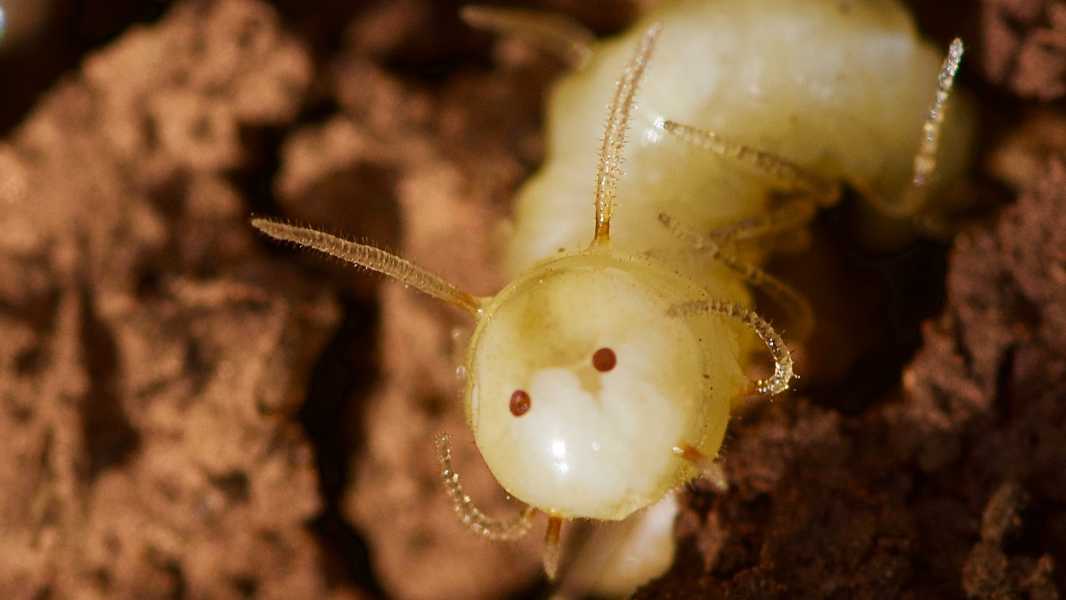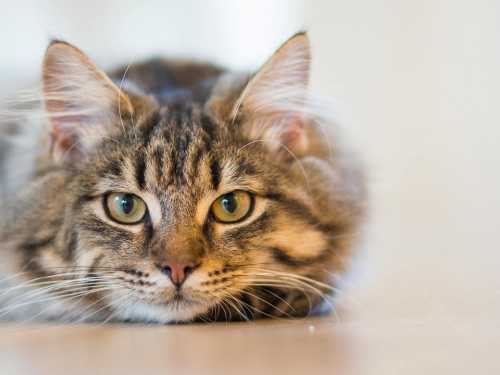
A fly larva uses its false termite head to enter termite nests. (Photo courtesy of Roger Vila)
A new study has found that mountain fly larvae have evolved fake faces on their rear ends to serve as clever camouflage for invading termite colonies.
Scientists have discovered false termite-like faces on the backs of a previously unknown blowfly larva found in the mountains of Morocco. The faces are part of a radical mimicry strategy that fools harvester termites (Anacanthotermes ochraceus) into believing the blowfly larvae are part of their colony.
Soldier termites usually eliminate colony intruders outright, but the camouflaged larvae live unmolested among the soldiers and have full access to the mound's food supply. The camouflage is so effective that the termites even appear to care for the clever larvae, according to a study published Monday (Feb. 10) in the journal Current Biology.
The scientists stumbled upon the two-faced larvae by chance while searching for ants in the Anti-Atlas mountain range in southern Morocco. The team lifted a rock and found a termite mound with three previously unknown fly larvae inside, lead author Roger Vila, a scientist at the Institute of Evolutionary Biology in Spain, said in a statement.
“This is probably an extremely rare species because we conducted three other expeditions in the region and, despite lifting hundreds of rocks, we only found two flies in another termite mound,” Vila said.
Termite mounds provide sheltered, food-rich habitats for any species skilled enough to get in. According to the study, the fly's strategy is social integration, requiring significant morphological, behavioral, and physiological adaptations to achieve it.
The researchers collected the camouflaged fly and termite larvae and brought them back to the lab for further analysis, where they found a variety of extreme adaptations. For example, the larvae had modified breathing holes that acted like fake termite eyes, and altered sensory organs called papillae that resembled termite antennae.
Chemical camouflage
The larvae also emit chemical odors that match the unique aroma of termites. Vila noted that the team analyzed the chemical composition of the larvae and found that they were indistinguishable from the termites in the colonies they inhabited.
“They smell exactly the same,” Vila said. “In addition, the larvae and termites from the same colony have slight differences in their chemical profile that distinguish them from other termite colonies. This smell is key to interacting with the termites and benefiting from their life together. It’s chemical camouflage.”
The researchers determined that the larvae belong to the genus Rhyncomya. No other member of this group is known to display this type of mimicry, so the team suspects that the larvae may be a new species. However, the team was unable to raise the larvae to adulthood to confirm this, as all of them died in the lab before reaching maturity.
Vila noted that there may be aspects of the termite nest and the interactions between the two species that they were unable to reproduce in the lab.
“Their diet is currently unknown and their adult form remains a mystery,” Vila added.
TOPICS mountains
Sourse: www.livescience.com





